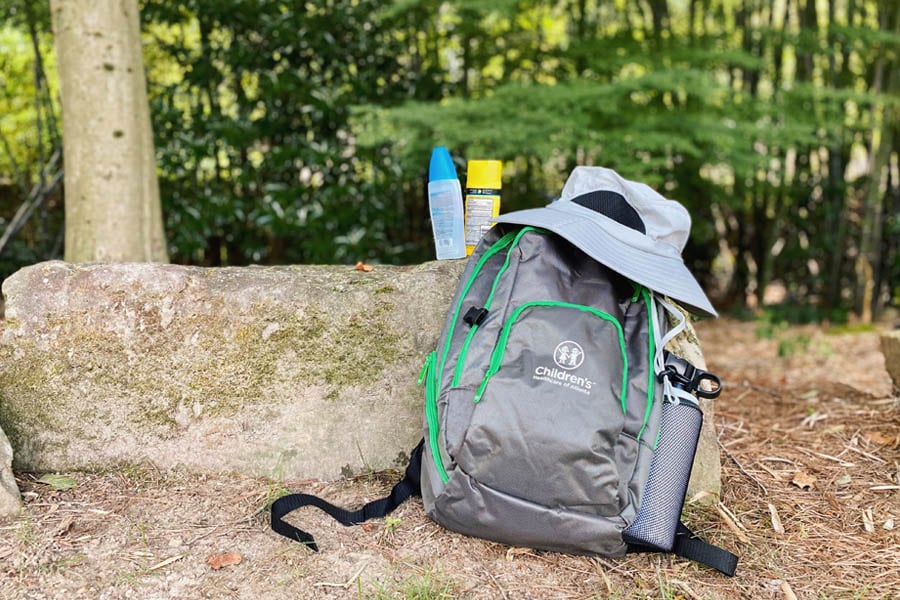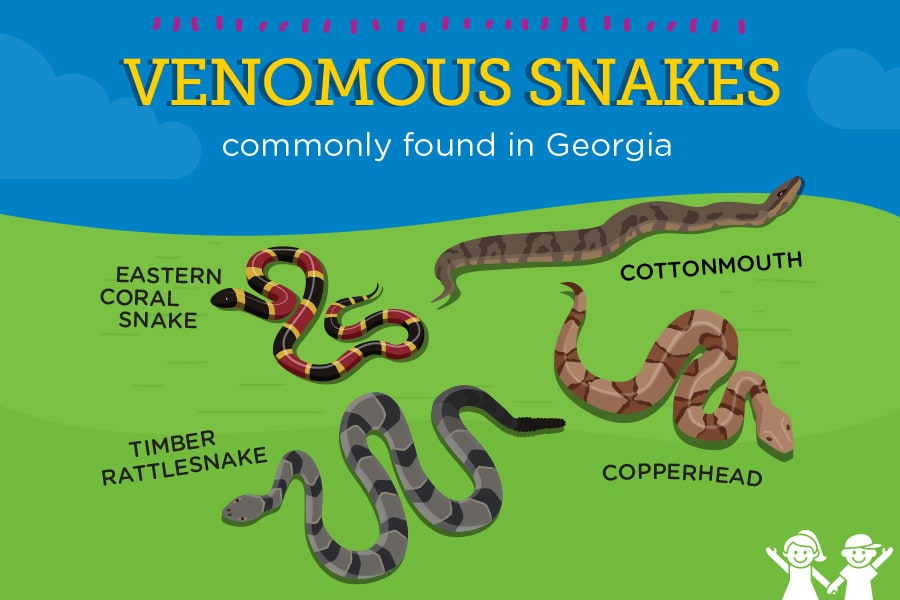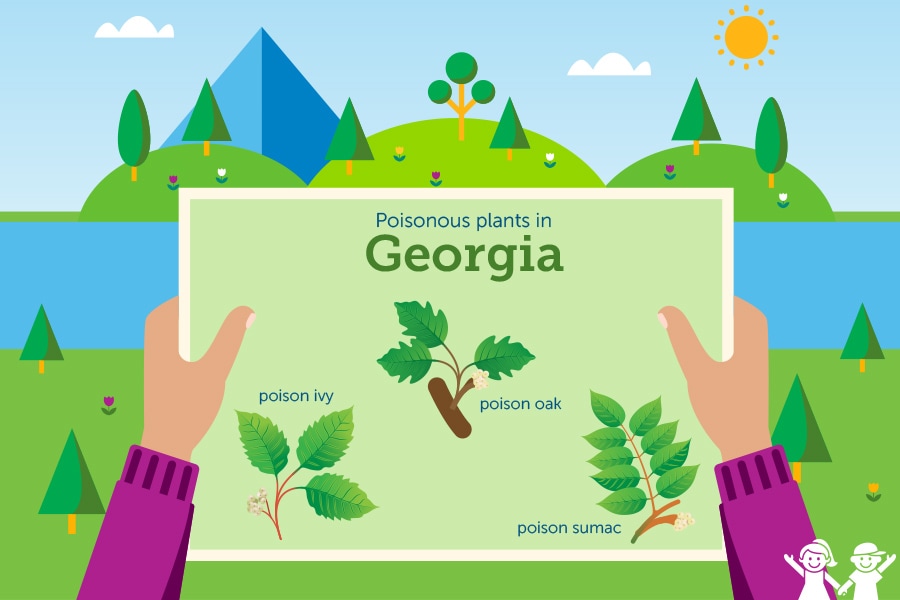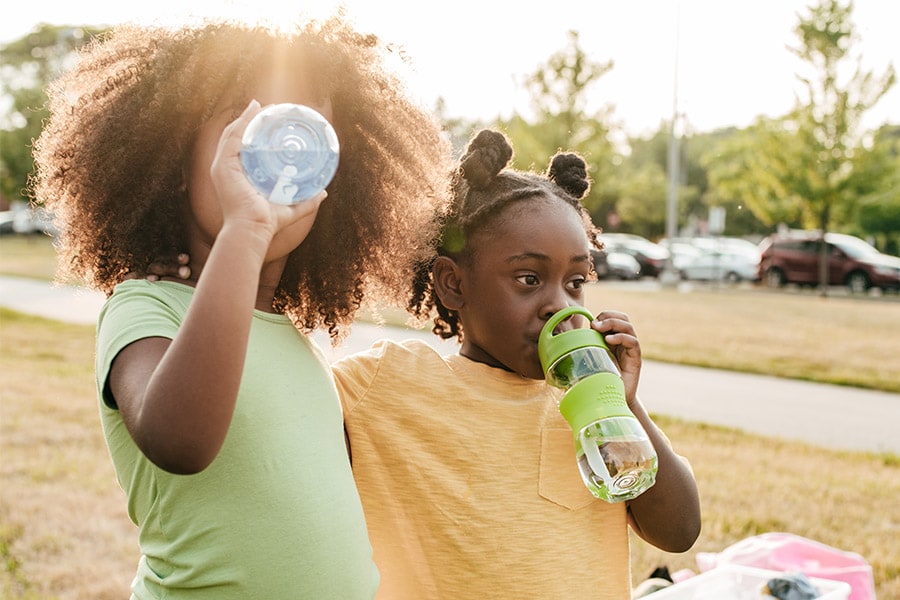How to Avoid Bugs, Snakes and Poisonous Plants
Getting outside is a great way to be active, spend quality time as a family, and find some peace among life’s ups and downs. With the many benefits mother nature offers, there comes some risk for injury. But don’t worry—a little preparation can help keep your family safe while you make the most of your time outside.
Read on for tips to prevent bad experiences with bugs, snakes and plants while you’re exploring.
In this article:

Keep mosquitoes and other bugs away
Bug bites and stings can cause itching or pain, leaving kids feeling miserable. Beyond the irritation, some insects carry serious diseases, such as Lyme and West Nile disease. So it’s important to protect yourself and your kids while you’re outside, especially during warmer summer months.
Our top tips to prevent bug bites and stings:
- Use insect repellent. Buy a bug spray that contains 10 to 30% DEET. You can choose the strength of repellent based on how much time you plan to spend outside. For instance, if you plan to be outside for only 1 hour, a bug spray with 10% DEET may be the best option. The American Academy of Pediatrics does not recommend using bug spray on infants younger than 2 months of age.
- Avoid breeding grounds. Mosquitoes love to breed in areas where there is standing water. To keep mosquitoes away, empty things like birdbaths, kiddie pools and buckets after each use. And try to avoid going out when these pesky bugs are more active, which is typically at dusk and dawn.
- Check for ticks. These bugs are usually found in heavily wooded areas and tend to make their way to the scalp, back of the neck, armpits, groin and behind the knees. Always check children (and pets!) for ticks and remove them right away. To remove a tick, use steady upward pressure with fine-tipped tweezers as close to the skin as possible.
- Keep covered. When in wooded areas, make sure your child’s clothes cover most of their body. Long pants and shirts (tucked in) and high boots will lower the risk of insect bites. For warmer days, look for breathable fabrics such as cotton, nylon and polyester blends.
- Never touch nests. Teach your child that they should never touch bee or wasp nests and that they should steer clear of them completely whenever possible.
- Be aware of sneaky hiding areas. Some insects, such as spiders, tend to hide under wood piles, outdoor furniture or other objects. Teach kids to avoid these areas while playing.
If your child shows any symptoms of an allergic reaction, such as shortness of breath, redness or hives that cover most of the body, go to the emergency department right away.

Learn about snakes commonly found in Georgia
Many people are afraid of snakes, especially venomous ones, and that’s OK. It’s normal to feel fearful of creatures that could cause harm. But the best thing you can do to prevent snake bites is learn about snakes in your area and, most importantly, leave them alone.
Our top tips to prevent snake bites:
- Supervise kids and pets outdoors. Keep a close eye on what’s happening outside. This way, if a bite should occur, you’ll know what kind of critter was involved.
- Wear closed-toe shoes. When your family is in the yard, on a walk or on a hike, wear closed-toe shoes. If someone is bitten, the bite is less likely to cause injury if everyone is wearing proper footwear.
- Avoid tall brush and overgrown plants. Snakes love to take cover under plants, such as English ivy and monkey grass. Avoid these areas while you’re out and about, and keep these areas trimmed if you have a yard.
- Clear play areas. Keep outdoor play areas free of debris, rocks and leaves. These are also popular hangouts for snakes.
- Teach kids to respect wildlife. Most snake bites occur when people try to handle or harm the animal. If you come across a slithery friend, the best thing you can do is leave it alone. In fact, many snakes, such as king snakes and rat snakes, are good to have around as they control rodent populations.
- Learn about common snakes in your area. The more you know about wildlife in your area, the better. But it’s especially important to know about venomous snakes. Learning how to identify them can ease some fears. You can even test your knowledge by joining snake ID groups on social media. Here are some hints:
- Almost all venomous snakes in Georgia, except for the coral snake, are vipers with large, triangular heads.
- Georgia vipers each have identifying features. For example, copperheads are known for their “Hershey’s kiss” markings, cottonmouths have a pixelated bullseye pattern and timber rattlesnakes have chevron markings with a black tail.
- The coral snake can be confused with non-venomous snakes. The easiest way to ID a coral snake is to remember that its yellow and red bands typically touch. But it’s always best to ID a snake using multiple characteristics. Coral snakes have black snouts, setting them apart from similar looking non-venomous snakes in the state.
If you see a snake on your property, you can encourage it to move along with a gentle spray of a water hose. If you want it removed, call in an expert. Do a quick search for snake removal specialists in your area.

Avoid poisonous plants such as poison ivy or sumac
Poison ivy, poison oak and poison sumac are all green-leaf plants that cause rashes. Many people who are exposed to these poisonous plants experience an allergic reaction, including severe itching and swelling.
Unfortunately, these poisonous plants all look similar to harmless plants, so it can be hard to know what’s what.
Some characteristics of common poisonous plants:
- Shrubs, vines or clusters growing low to the ground
- Shiny or glossy leaves
- Leaves grouped in 3’s or pairs of long leaves with a single leaf on the end
How to avoid poisonous plants:
- Dress kids in long sleeves and pants when possible
- Wear gloves when gardening or working in the yard
- Stay on marked trails or paths while walking or hiking
What to do if someone is exposed to these plants
If you or your child brushes up against one of these plants, wash the area with soap and water right away. Take a shower rather than a bath to prevent the plant’s oils from spreading to other areas of the body.
If your child has a rash, call your doctor or pediatrician, especially if they have a fever. They may find some relief from the itchiness and irritation by taking a cool shower or applying calamine lotion to the affected areas. In more extreme cases, your child’s pediatrician may recommend antihistamines to help with their symptoms.
If your child has an injury or is showing signs of illness, call your doctor or visit an urgent care center. If your child has a life-threatening injury or illness, is having trouble breathing or is unconscious, call 911 and/or visit an emergency department immediately.


